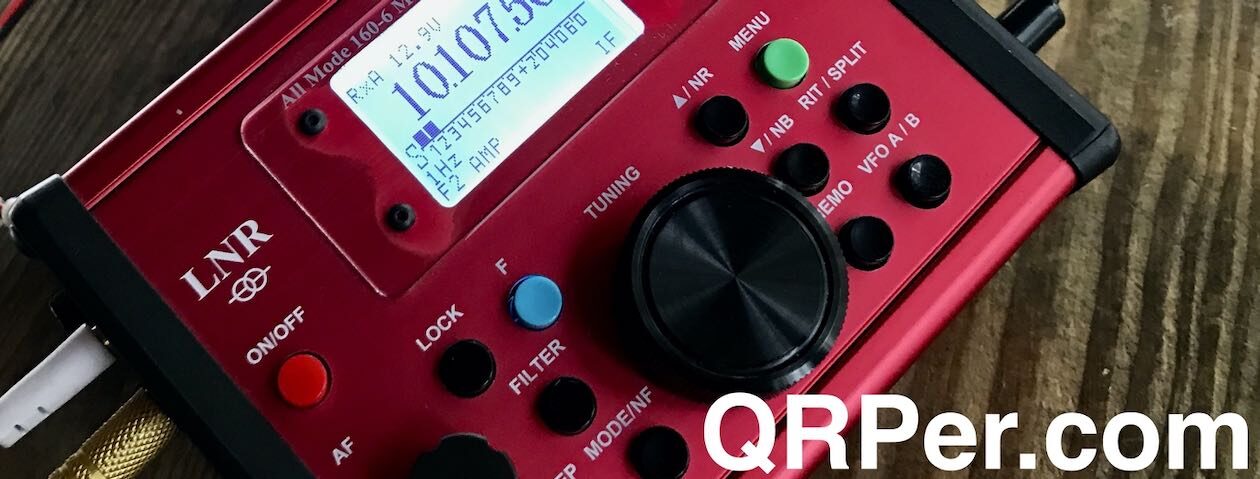 Because I receive so many tips from readers here on QRPer, I wanted way to share them in a concise newsletter format. To that end, welcome to QRPer Notes, a collection of links to interesting stories and tips making waves in the world of radio!
Because I receive so many tips from readers here on QRPer, I wanted way to share them in a concise newsletter format. To that end, welcome to QRPer Notes, a collection of links to interesting stories and tips making waves in the world of radio!
Field Antenna Survey
 Many thanks to Phil (KA4KOE) who shares the results from an informal survey he conducted on the POTA Facebook group. Phil writes:
Many thanks to Phil (KA4KOE) who shares the results from an informal survey he conducted on the POTA Facebook group. Phil writes:
Tom
I’ve let the survey run for about 3 days on the POTA Facebook group. Sample size was 658 votes. I opted to do a “type” survey and not by manufacturer.
Results:
-
- End Fed Half-wave: 25%.
- Shortened vertical with loading coil: 20%.
- Full-size vertical antenna / Hamstick style vertical with helical coil:12% each.
- Full-size dipole/doublet, etc.: 10%.
- End Fed Random Wire: 9%.
- Screwdriver motorized coil antenna: 3%
- Something tossed in tree and just hoped it would work: 2%
Total: 93%.
Remaining obscure types cut-off below 2% accounted for 7%.
Again, like the poll I conducted previously on radio types, not surprised by the No. 1 spot.
What DID surprise me was #7: I put that selection in the poll types as a joke but 2% of hams throw a wire up in a tree or other support with no forethought and hope it works.
The Palm Pico: Getting a grip!
Many thanks to Terry (N7TB) who shares the following tip:
Hi Thomas,
I was looking at your post re: the Pico Paddle.
I have both the single and double Pico paddle and the KX3 mount. After watching you hand hold your paddles, I came up with a way to make small paddles easier to hold. I have attached a photo. It is a small piece of 3/8 ID pipe insulation to make holding the Pico paddle easier.
Have a great trip to Hamvention.
73,
Terry
N7TB
QRP Radios from the 70s and 80s
Many thanks to Ron (W6AZ) who shares the following video from Mikrowave1 on YouTube:
You asked for it! Here is the birth of QRP and a whack at revealing the top 10 QRP Homebrew Projects and Commercial Radios that started it all. What is all the fuss about low power?


I guess that I did not see the survey. I use an end fed long wire about 37 feet long. I feed it into a 9:1 unun and MFJ portable antenna tuner. I have worked numerous countries, used in various contests, and find it most usable, however at times a bit noisy.
Terry (N7TB), Thanks for your ‘Grip Tip!’ It would work with any number of paddles. I’ve used it with my portable telescopic masts.
72!
de W7UDT
I somehow happened to watch that video about QRP rigs thinking to myself “life is TOO short for QRP”…
Then I got to the end and realized I still own my FT-7 and was reminded of the trip with my parents in a rented GMC motor home where I worked QRP CW as a newly minted novice!
Fond memories for sure and I even went so far as to change my mind about selling that grand old lady of an HF rig-and, it is the only non-Kenwood rig I own HI HI
73
WD9HRP
As a relatively new QRP operator, the Visio on the history of QRP was excellent and affirmative.
73
Terry,
N7TB
Thank you for all the great work you do on these great subjects I am a novice and was always interested in ham radios and even now that I am retired I look for them at yard sales and flee markets but i never found a good one to use at home my brother is an CB person and radio nut who loves the hobbie of h radios again thank you Joe Sawicki.
As a movement, QRP began as homebrew and mostly transistors.
In the late fifties or very early sixties, QST had a cover article, a single transistor transmitter, “X miles with X microwatts”. Others followed. There wasn’t much you could dowith transistors except such stunts.
In 1968, Wes Hayward had an article ablut direct conversion receivers, certainly a new name. That allowed for simple receivers to go with simple transmitters.
In1969, Ten Tec came along. A new company only selling solid state equipment. I think they only sold modules to begin with,though by 1971 definitely they sold a direct conversion receiver in a box.
Eventually they sold transceivers, and superhet receivers in them, then even SSB, and eventually higher power.
But sadly, most rigs used direct conversion receivers. Heathkit’s exception was the HW-9.
In July 1972 there was an 80M QRP SSB rig in QST. Nothing simple, just 5W out.
There was a slow start to homebrew higher power. I wasn’t sure if it was about available transistors, or the circuitry to use them in high power. CW and FM went first, SSB was slower.